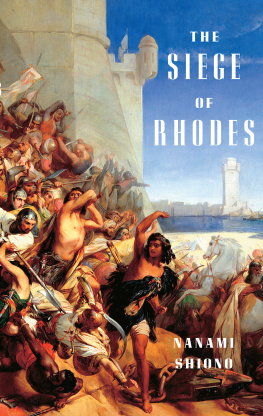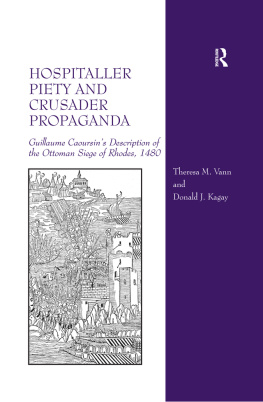Nanami Shiono - The Siege of Rhodes
Here you can read online Nanami Shiono - The Siege of Rhodes full text of the book (entire story) in english for free. Download pdf and epub, get meaning, cover and reviews about this ebook. year: 2020, publisher: Kodansha USA, genre: Religion. Description of the work, (preface) as well as reviews are available. Best literature library LitArk.com created for fans of good reading and offers a wide selection of genres:
Romance novel
Science fiction
Adventure
Detective
Science
History
Home and family
Prose
Art
Politics
Computer
Non-fiction
Religion
Business
Children
Humor
Choose a favorite category and find really read worthwhile books. Enjoy immersion in the world of imagination, feel the emotions of the characters or learn something new for yourself, make an fascinating discovery.
- Book:The Siege of Rhodes
- Author:
- Publisher:Kodansha USA
- Genre:
- Year:2020
- Rating:5 / 5
- Favourites:Add to favourites
- Your mark:
- 100
- 1
- 2
- 3
- 4
- 5
The Siege of Rhodes: summary, description and annotation
We offer to read an annotation, description, summary or preface (depends on what the author of the book "The Siege of Rhodes" wrote himself). If you haven't found the necessary information about the book — write in the comments, we will try to find it.
The Siege of Rhodes — read online for free the complete book (whole text) full work
Below is the text of the book, divided by pages. System saving the place of the last page read, allows you to conveniently read the book "The Siege of Rhodes" online for free, without having to search again every time where you left off. Put a bookmark, and you can go to the page where you finished reading at any time.
Font size:
Interval:
Bookmark:
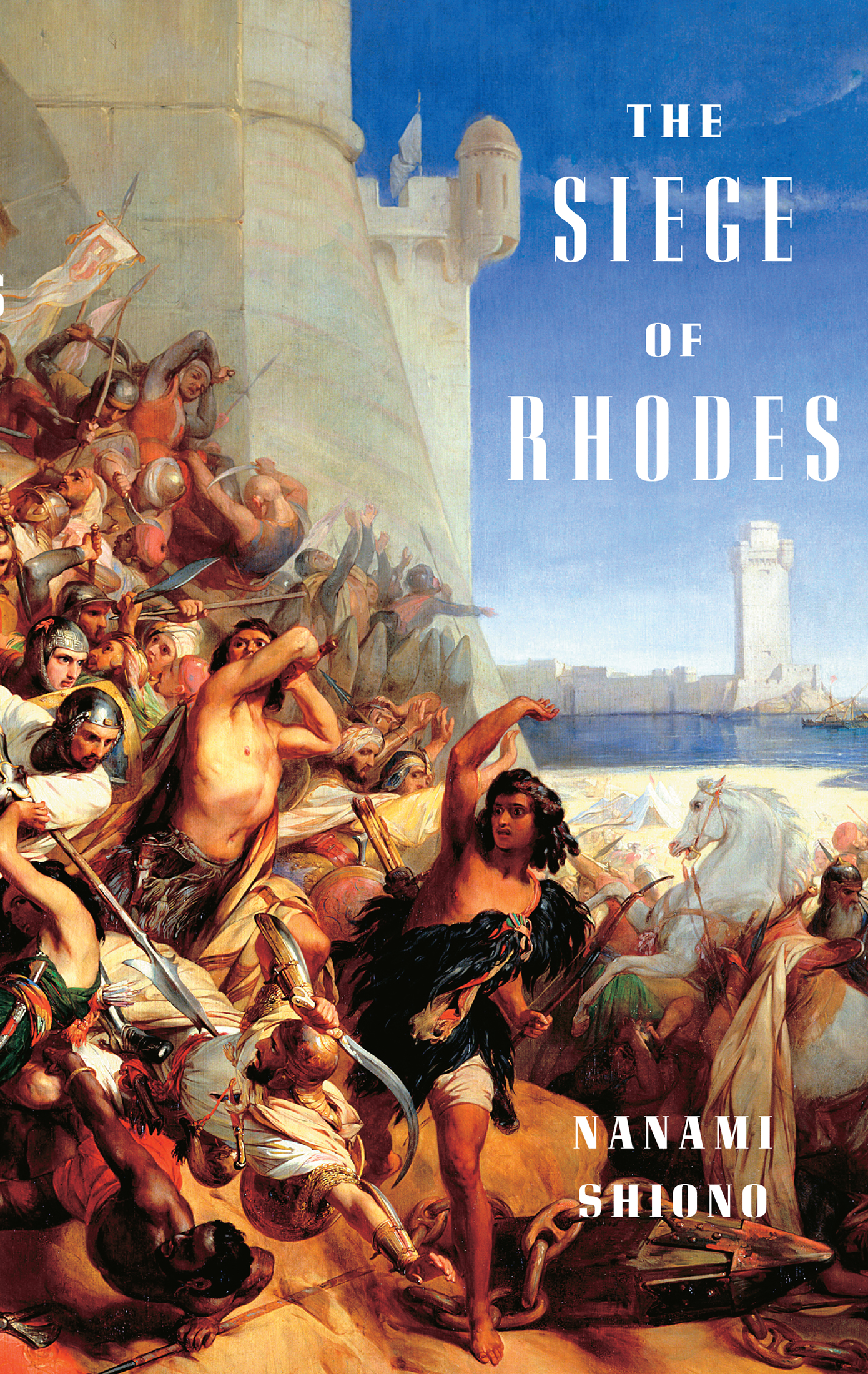

Copyright 2006 by Nanami Shiono
All rights reserved.
Published by Vertical, an imprint of
Kodansha USA Publishing, LLC., 2020
Originally published in Japanese as Rodosuto Koboki by Shinchosha, Tokyo, 1985.
Ebook ISBN9781949980950
First Edition
Kodansha USA Publishing, LLC.
451 Park Avenue South, 7th Floor
New York, NY 10016
www.readvertical.com
a_prh_5.5.0_c0_r0
Praise for The Fall of Constantinople:
Shiono has a talent for weaving the thoughts of diverse characters into a credible narrative [and] depict[ing], in elegant prose, the decisive moments of the battleA well-paced and entertaining insight into the fall of a city and the various political and religious forces that contributed to its decline.
The International Herald Tribune
The encyclopedia explains the Italian word cadetto as follows:
The term originated in the Gascogne region of France and spread throughout the rest of Europe during the medieval period. It referred to the second and subsequent sons of a feudal aristocratic family. Under the system of feudal estates, it was customary for the eldest son to inherit the estate and all assets, so his younger brothers had to make their own fortunes as clergy or as soldiers. This original meaning of second or younger son of nobility, though, has disappeared in modern usage, and only its military connotation survives. Now the term is used for students in military or naval academies, that is to say, candidates for an officers commission. French cadet, English cadet.
The following is a tale of three young cadetti who lived at the beginning of the sixteenth century. It was an era when the nations of Western Europe were establishing centralized states similar to the Ottoman Empires in order to resist the advance of that empire. Half a century had passed since the fall of Constantinople.
Social change often goes hand in hand with changes in military technology. The power of cannons was demonstrated during the siege of Constantinople and transformed the nature of combat thereafter. Not until the siege of Rhodes, however, were cannons put to serious use. Moreover, the battle at Rhodes was a confrontation between the Order of the Knights of St. John, a typical product of the medieval world, and the modernized army of the Turks. The knights of the order not only had to be of noble blood, but devoted their lives to Christ as monks.
Leaving aside whether or not this battle opened or closed the curtain on a particular era of history, its defining characteristic was the youth of the men who waged it. The protagonists on both sides at the siege of Rhodes were in their twenties. The Ottoman Sultan Suleiman I, later revered as Suleiman the Magnificent, was twenty-eight years old. Representing the Order of the Knights of St. John, Jean de la Vallette-Parisot was also twenty-eight, Giambattista Orsini was twenty-five, and Antonio del Carretto had just turned twenty.
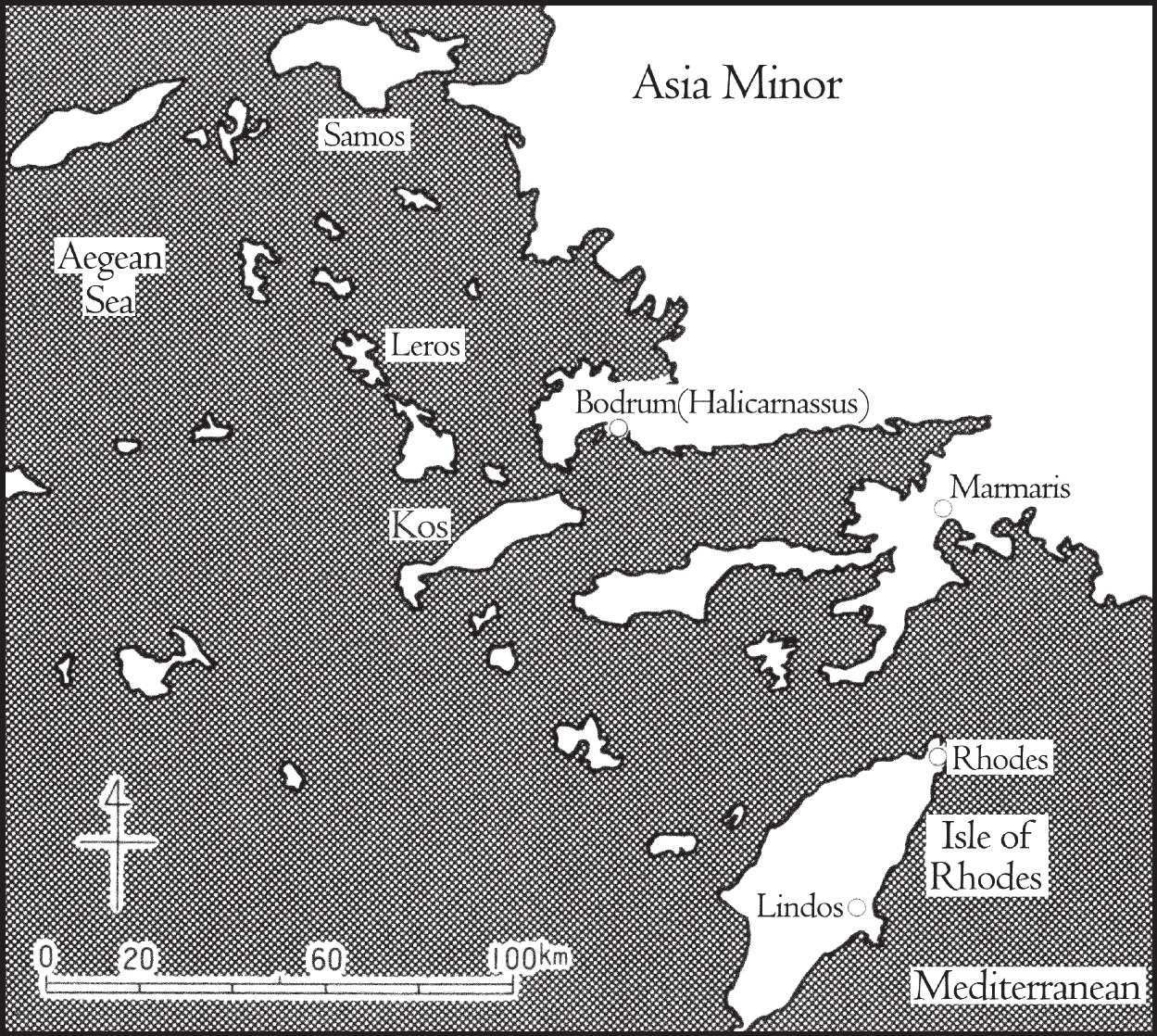
Isle of Rhodes and Environs
In April of 1522, a single, large sailing vessel made its way north with the Isle of Rhodes, aglow in the setting sun, visible on its starboard side. Rhodes rested upon the sea like a long nut stretching from north to south. From the sea there was no sign of human habitation, perhaps because Rhodess western coast was not blessed with any good harbors offering shelter from the overpowering northwesterly winds that blew through the Aegean Sea between spring and fall. The soft light of approaching sunset washed over nothing but the thick stands of trees, the craggy faces of rocks, and the expansive, uninhabited beach.
Skillful operation of its sails allowed the Genoese merchant ship to make progress despite headwinds. This journey to the Orient had been at the behest of the Order of the Knights of St. John, based on Rhodes, who had hired it to carry ammunition and wheat to the island. After loading ammunition purchased in Milan and leaving from the port at Genoa, it had stopped in Naples. It also stayed briefly in the Sicilian port of Messina, but only to purchase wheat. Ships piloted by Genoese sailors could easily handle a month-long voyage without making a call at port. They could therefore reasonably sail with their specialized cargo directly from Messina to Rhodes without stopping by Crete, which was controlled by the Republic of Venice.
The main cities of Crete were all concentrated on its northern shore, and a ship could not traverse those waters without drawing the attention of the Venetian naval patrol. To avoid unnecessary trouble with the Venetians, they had to take a long detour around Cretes southern coast and then cut north and head for Rhodes. The Republic of Venice intended to uphold its goodwill treaty with Turkey and maintain a position of neutrality, unlike the Order of the Knights of St. John, which had ignored the Ottoman Sultans order to surrender and were preparing for war.
A young man named Antonio was aboard ship, accompanied by his valet. He was the second son of the Marquis del Carretto, lord of the Finale Estate near Genoa. He had curly, dark brown locks, and dark brown eyes that made his pale forehead especially conspicuous. He had a calm demeanor and spoke infrequently. This seemed unusual for someone so young, but not so much that it made anyone uncomfortable during the month he had shared the captains table as guest of honor. The ships crew and the other passengers, all merchants, quickly grew accustomed to this young man who always had a book open or gazed quietly at the distant horizon.
Antonio del Carretto always wore the uniform of the Order of the Knights of St. John. It was all black except for a white cross embroidered on the chest, and was both the everyday clothing and the clerical robe of the knights of the order. Though he was clad entirely in black, the graceful curve of his legs revealed the twenty-year-olds youthfulness.
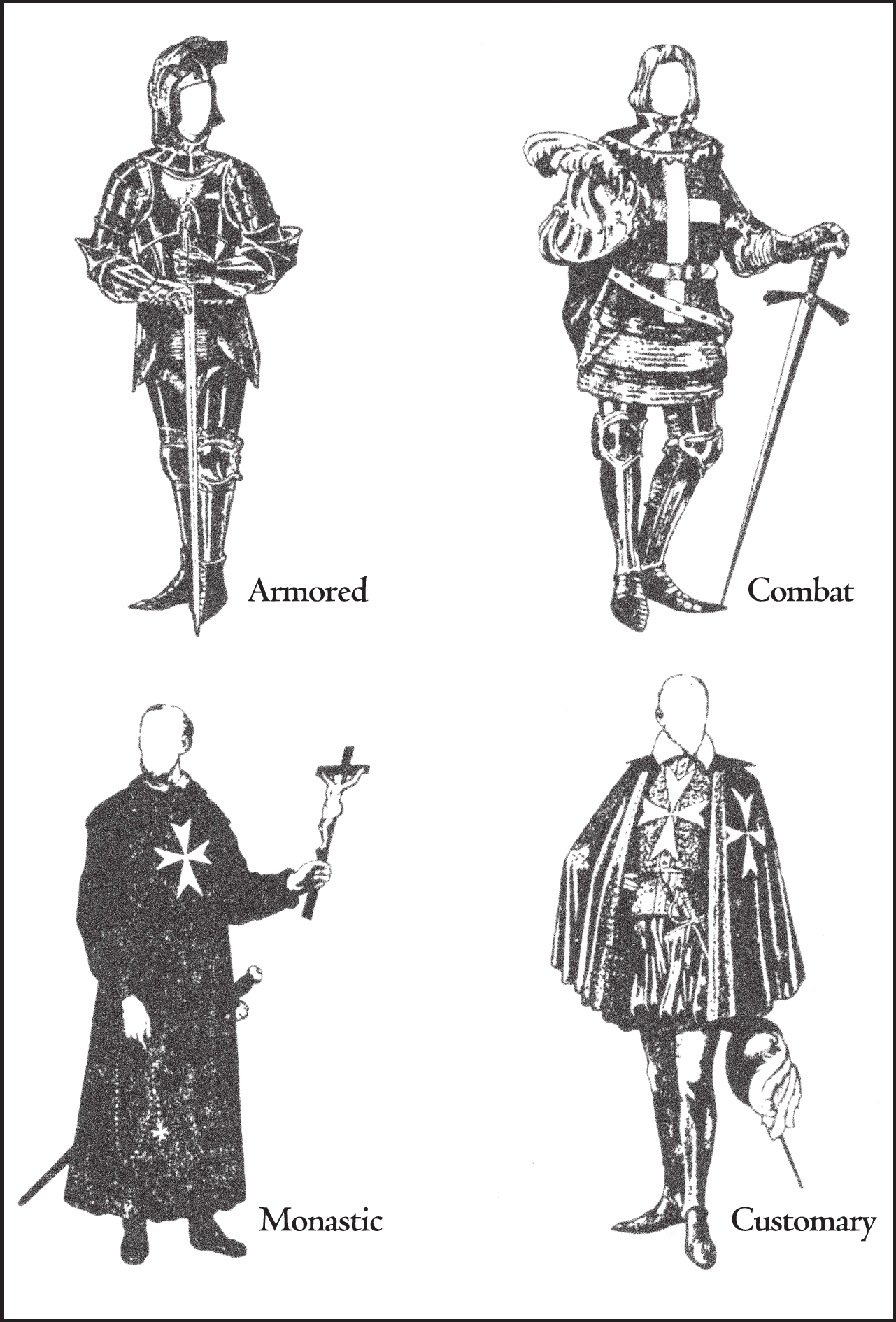
Attires of the Order of St. John
There was a great fluttering of the sails and the ship changed course. The sailors sprang into action. Since they were coming into port with the northwesterly winds at their backs, they had to slow down by replacing the triangular sail with a smaller one and furling the lower half of the square sail.
By then, a shoreline shrouded in lavender mist was visible on the port side of the ship, which had turned hard to the right. That land stretched far to the east. It was the southern shore of Asia MinorTurkish territory. Both Rhodes and, further to the east, Cyprus were positioned on the front line where Islam and Christendom collided. The distance between Rhodes and the southern extreme of Asia Minor was no more than eighteen kilometers. Since the port of Rhodes in the capital city was located at the northernmost point of the island, the captain of the ship once again turned the rudder starboard as he took the ship around the cape that jutted out from the northern shore.
Font size:
Interval:
Bookmark:
Similar books «The Siege of Rhodes»
Look at similar books to The Siege of Rhodes. We have selected literature similar in name and meaning in the hope of providing readers with more options to find new, interesting, not yet read works.
Discussion, reviews of the book The Siege of Rhodes and just readers' own opinions. Leave your comments, write what you think about the work, its meaning or the main characters. Specify what exactly you liked and what you didn't like, and why you think so.

